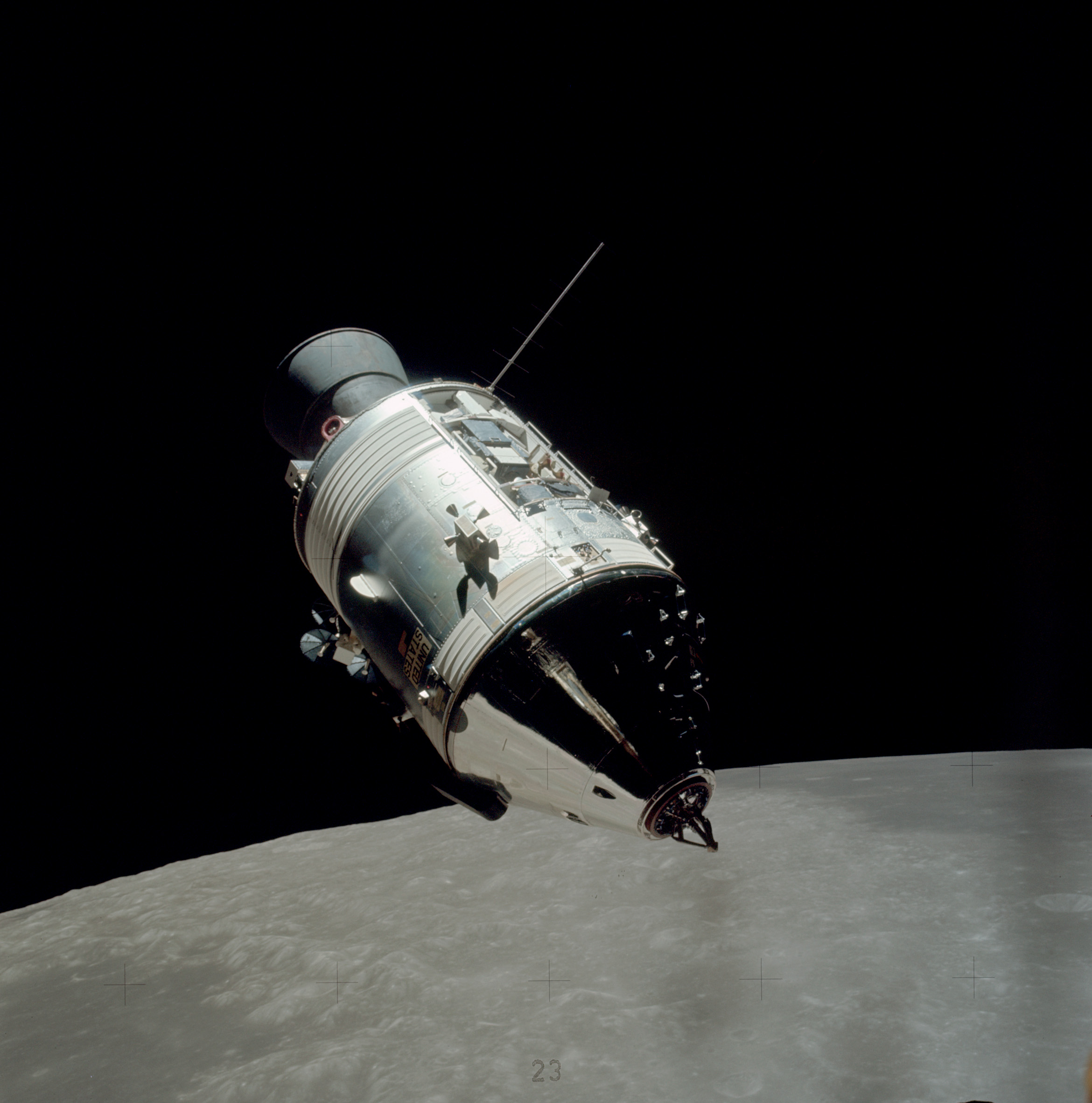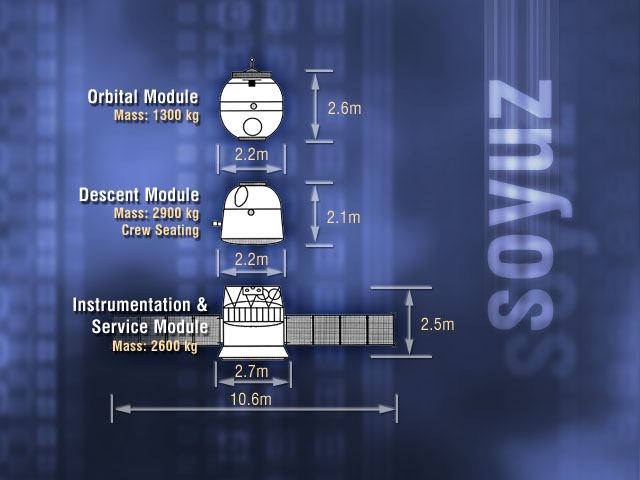|
Soyuz 16
Soyuz 16 (, ''Union 16'') was a December, 1974, crewed test flight for a joint Soviet-United States space flight which culminated in the Apollo–Soyuz mission in July 1975. The two-man Soviet crew, Anatoly Filipchenko and Nikolai Rukavishnikov, tested a docking ring and other systems to be used in the joint flight. Crew Backup crew Reserve crew Mission parameters *Mass: *Perigee: *Apogee: *Inclination: 51.7° *Period: 88.4 minutes Background The Soyuz 16 mission was the final rehearsal and first crewed mission in a program which culminated in the Apollo–Soyuz (ASTP) mission seven months later. The Soviet Union and the United States, Cold War rivals, had signed several arms control treaties in the 1960s and 1970s, and had entered into a period of detente by the early 1970s. In 1972, a treaty was signed to participate in a joint crewed space flight as a symbol of this detente. Early concepts for a joint flight included the docking of a Soyuz craft to t ... [...More Info...] [...Related Items...] OR: [Wikipedia] [Google] [Baidu] |
Soviet Space Program
The Soviet space program () was the state space program of the Soviet Union, active from 1951 until the dissolution of the Soviet Union in 1991. Contrary to its competitors (NASA in the United States, the European Space Agency in Western Europe, and the Ministry of Aerospace Industry in China), which had their programs run under single coordinating agencies, the Soviet space program was divided between several internally competing OKB, design bureaus led by Sergei Korolev, Korolev, Kerim Kerimov, Kerimov, Mstislav Keldysh, Keldysh, Mikhail Yangel, Yangel, Valentin Glushko, Glushko, Vladimir Chelomey, Chelomey, Viktor Makeyev, Makeyev, Boris Chertok, Chertok and Information Satellite Systems Reshetnev, Reshetnev. Several of these bureaus were subordinated to the Ministry of General Machine-Building. The Soviet space program served as an important marker of claims by the Soviet Union to its superpower status. Soviet rocketry, Soviet investigations into rocketry began with the fo ... [...More Info...] [...Related Items...] OR: [Wikipedia] [Google] [Baidu] |
Crewed Space Mission
Human spaceflight (also referred to as manned spaceflight or crewed spaceflight) is spaceflight with a crew or passengers aboard a spacecraft, often with the spacecraft being operated directly by the onboard human crew. Spacecraft can also be remotely operated from ground stations on Earth, or autonomously, without any direct human involvement. People trained for spaceflight are called astronauts (American or other), ''cosmonauts'' (Russian), or ''taikonauts'' (Chinese); and non-professionals are referred to as spaceflight participants or ''spacefarers''. The first human in space was Soviet cosmonaut Yuri Gagarin, who launched as part of the Soviet Union's Vostok program on 12 April 1961 at the beginning of the Space Race. On 5 May 1961, Alan Shepard became the first American in space, as part of Project Mercury. Humans traveled to the Moon nine times between 1968 and 1972 as part of the United States' Apollo program, and have had a continuous presence in space for on the ... [...More Info...] [...Related Items...] OR: [Wikipedia] [Google] [Baidu] |
Kosmos 638
Kosmos 638 () was an uncrewed test of the 1975 Apollo–Soyuz Test Project Soyuz. It carried an APAS-75 androgynous docking system. This was followed by another uncrewed test of this spacecraft type, Kosmos 672. It was a Soyuz 7K-TM spacecraft. When the air was released from the orbital module (which is ejected before re-entry of the capsule) it caused unexpected motions with the spacecraft. This led to the next test also being uncrewed. Mission parameters *Spacecraft: Soyuz-7K-TM №71 *Mass: 6510 to 6680 kg *Crew: None *Launched: April 3, 1974 *Landed: April 13, 1974 See also * Kosmos 672 * Soyuz 16 References Kosmos 0638 1974 in the Soviet Union Spacecraft launched in 1974 Apollo–Soyuz Test Project Soyuz uncrewed test flights {{USSR-spacecraft-stub ... [...More Info...] [...Related Items...] OR: [Wikipedia] [Google] [Baidu] |
Salyut
The ''Salyut'' programme (, , meaning "salute" or "fireworks") was the first space station programme, undertaken by the Soviet Union. It involved a series of four crewed scientific research space stations and two crewed military reconnaissance space stations over a period of 15 years, from 1971 to 1986. Two other ''Salyut'' launches failed. In one respect, ''Salyut'' had the space-race task of carrying out long-term research into the problems of living in space and a variety of astronomical, biological and Earth-resources experiments, and on the other hand, the USSR used this civilian programme as a cover for the highly secretive military ''Almaz'' stations, which flew under the ''Salyut'' designation. ''Salyut'' 1, the first station in the program, became the world's first crewed space station. ''Salyut'' flights broke several spaceflight records, including several mission-duration records, and achieved the first orbital handover of a space station from one crew to anothe ... [...More Info...] [...Related Items...] OR: [Wikipedia] [Google] [Baidu] |
Apollo Spacecraft
The Apollo spacecraft was composed of three parts designed to accomplish the American Apollo program's goal of landing astronauts on the Moon by the end of the 1960s and returning them safely to Earth. The expendable (single-use) spacecraft consisted of a Apollo command and service module, combined command and service module (CSM) and an Apollo Lunar Module (LM). Two additional components complemented the spacecraft stack for space vehicle assembly: a spacecraft–LM adapter (SLA) designed to shield the LM from the aerodynamic stress of launch and to connect the CSM to the Saturn (rocket family), Saturn launch vehicle and a launch escape system (LES) to carry the crew in the command module safely away from the launch vehicle in the event of a launch emergency. The design was based on the lunar orbit rendezvous approach: two docked spacecraft were sent to the Moon and went into lunar orbit. While the LM separated and landed, the CSM remained in orbit. After the lunar excursion ... [...More Info...] [...Related Items...] OR: [Wikipedia] [Google] [Baidu] |
Skylab
Skylab was the United States' first space station, launched by NASA, occupied for about 24 weeks between May 1973 and February 1974. It was operated by three trios of astronaut crews: Skylab 2, Skylab 3, and Skylab 4. Skylab was constructed from a repurposed Saturn V third stage (the S-IVB), and took the place of the stage during launch. Operations included an orbital workshop, a solar observatory, Earth observation and hundreds of experiments. Skylab's orbit eventually decayed and it disintegrated in the atmosphere on July 11, 1979, scattering debris across the Indian Ocean and Western Australia. Overview Skylab was the only space station operated exclusively by the United States. A permanent station was planned starting in 1988, but its funding was canceled and U.S. participation shifted to the International Space Station in 1993. Skylab had a mass of with a Apollo command and service module (CSM) attached and included a workshop, a solar observatory, and sever ... [...More Info...] [...Related Items...] OR: [Wikipedia] [Google] [Baidu] |
Soyuz Spacecraft
Soyuz () is a series of spacecraft which has been in service since the 1960s, having made more than 140 flights. It was designed for the Soviet space program by the Korolev Design Bureau (now Energia). The Soyuz succeeded the Voskhod spacecraft and was originally built as part of the Soviet crewed lunar programs. It is launched atop the similarly named Soyuz rocket from the Baikonur Cosmodrome in Kazakhstan. Following the Soviet Union's dissolution, Roscosmos, the Russian space agency, continued to develop and utilize the Soyuz. Between the Space Shuttle's 2011 retirement and the SpaceX Crew Dragon's 2020 debut, Soyuz was the sole means of crewed transportation to and from the International Space Station, a role it continues to fulfill. The Soyuz design has also influenced other spacecraft, including China's Shenzhou and Russia's Progress cargo vehicle. The Soyuz is a single-use spacecraft composed of three main sections. The descent module is where cosmonauts are seated f ... [...More Info...] [...Related Items...] OR: [Wikipedia] [Google] [Baidu] |
Cold War
The Cold War was a period of global Geopolitics, geopolitical rivalry between the United States (US) and the Soviet Union (USSR) and their respective allies, the capitalist Western Bloc and communist Eastern Bloc, which lasted from 1947 until the dissolution of the Soviet Union in 1991. The term ''Cold war (term), cold war'' is used because there was no direct fighting between the two superpowers, though each supported opposing sides in regional conflicts known as proxy wars. In addition to the struggle for ideological and economic influence and an arms race in both conventional and Nuclear arms race, nuclear weapons, the Cold War was expressed through technological rivalries such as the Space Race, espionage, propaganda campaigns, Economic sanctions, embargoes, and sports diplomacy. After the end of World War II in 1945, during which the US and USSR had been allies, the USSR installed satellite state, satellite governments in its occupied territories in Eastern Europe and N ... [...More Info...] [...Related Items...] OR: [Wikipedia] [Google] [Baidu] |
Aleksandr Ivanchenkov
Aleksandr Sergeyevich Ivanchenkov (; born 28 September 1940) is a retired Soviet cosmonaut who flew as Flight Engineer on Soyuz 29 and Soyuz T-6, he spent 147 days, 12 hours and 37 minutes in space. Ivanchenkov first flew on Soyuz 29 in 1978 to the Salyut 6 space station. It was the fifth mission, the fourth successful docking, and the second long-duration crew for the orbiting station. Commander Vladimir Kovalyonok and flight engineer Ivanchenkov established a new space endurance record of 139 days. Ivanchenkov flew for a second time in 1982 on the Soyuz T-6 mission to the Salyut 7 space station. Along with two Soviet cosmonauts, the crew included a Frenchman, Jean-Loup Chrétien. Biography Ivanchenkov is married with one child. He was selected as a cosmonaut on 27 March 1973. He retired on 3 November 1993. Honours and awards *Twice Hero of the Soviet Union; *Pilot-Cosmonaut of the USSR; *Two Orders of Lenin; *Medal "For Merit in Space Exploration" (Russian Federati ... [...More Info...] [...Related Items...] OR: [Wikipedia] [Google] [Baidu] |
Yuri Romanenko
Yuri Viktorovich Romanenko (; born 1 August 1944) is a former Soviet Union, Soviet cosmonaut, twice Hero of the Soviet Union (March 16, 1978 and September 26, 1980). Over his career, Yuri Romanenko spent a total of 430 days 20 hours 21 minutes 30 seconds in space and 18 hours in space walks. In 1987 he was a resident of the Mir space station, launching on Soyuz TM-2 and landing aboard Soyuz TM-3. He remained on Mir for 326 days; that was the longest stay in space at that time. His son, Roman Romanenko is also a cosmonaut, and has become the third second-generation space traveler on Soyuz TMA-15 in May 2009. Early life Yuri Romanenko was born on August 1, 1944, in Koltubanovskiy village in Orenburg Oblast, Soviet Union. His father was a senior commander on military ships, and mother was a combat medic. His family later moved to Kaliningrad, where he graduated from a secondary school in 1961. His hobbies in school included building model aircraft and ship model, ships, boxing, Shoo ... [...More Info...] [...Related Items...] OR: [Wikipedia] [Google] [Baidu] |





